Life As an Airline Pilot, Copilot, or Flight Engineer
Example of Airline Pilot, Copilot, or Flight Engineer Job Pilot and navigate the flight of fixed-wing, multi-engine aircraft, usually on scheduled air carrier routes, for the transport of passengers and cargo. Requires Federal Air Transport Pilot certificate and rating for specific aircraft type used. Includes regional, National, and international airline pilots and flight instructors of airline pilots.
What Do Airline Pilots, Copilots, and Flight Engineers Do On a Daily Basis?
- Coordinate flight activities with ground crews and air traffic control and inform crew members of flight and test procedures.
- Instruct other pilots and student pilots in aircraft operations and the principles of flight.
- Direct activities of aircraft crews during flights.
- Check passenger and cargo distributions and fuel amounts to ensure that weight and balance specifications are met.
- Respond to and report in-flight emergencies and malfunctions.
- Confer with flight dispatchers and weather forecasters to keep abreast of flight conditions.
Featured schools near , edit
Qualities of an Airline Pilot, Copilot, or Flight Engineer
Airline Pilots, Copilots, and Flight Engineers state the following job skills are important in their day-to-day work.
Operation and Control: Controlling operations of equipment or systems.
Operation Monitoring: Watching gauges, dials, or other indicators to make sure a machine is working properly.
Active Listening: Giving full attention to what other people are saying, taking time to understand the points being made, asking questions as appropriate, and not interrupting at inappropriate times.
Critical Thinking: Using logic and reasoning to identify the strengths and weaknesses of alternative solutions, conclusions or approaches to problems.
Monitoring: Monitoring/Assessing performance of yourself, other individuals, or organizations to make improvements or take corrective action.
Reading Comprehension: Understanding written sentences and paragraphs in work related documents.
Related Job Titles for this Occupation:
- Military Pilot
- Executive Pilot
- Charter Pilot
- International First Officer
- Pilot
Job Opportunities for Airline Pilots, Copilots, and Flight Engineers
In 2016, there was an estimated number of 84,000 jobs in the United States for Airline Pilot, Copilot, or Flight Engineer. New jobs are being produced at a rate of 3.5% which is below the national average. The Bureau of Labor Statistics predicts 2,900 new jobs for Airline Pilot, Copilot, or Flight Engineer by 2026. The BLS estimates 8,100 yearly job openings in this field.
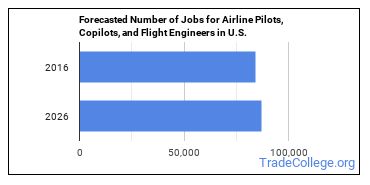
The states with the most job growth for Airline Pilot, Copilot, or Flight Engineer are Florida, New Jersey, and Georgia. Watch out if you plan on working in Wyoming, West Virginia, or New Hampshire. These states have the worst job growth for this type of profession.
Airline Pilot, Copilot, or Flight Engineer Average Salary
Airline Pilots, Copilots, and Flight Engineers make between $65,690 and $208,000 a year.
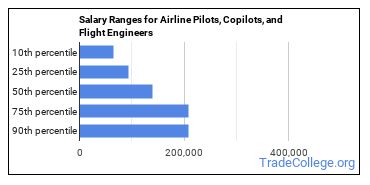
Airline Pilots, Copilots, and Flight Engineers who work in Michigan, Nevada, or Oregon, make the highest salaries.
How much do Airline Pilots, Copilots, and Flight Engineers make in different U.S. states?
| State | Annual Mean Salary |
|---|---|
| Alabama | $103,750 |
| Alaska | $148,820 |
| Arizona | $132,250 |
| Arkansas | $96,690 |
| California | $205,520 |
| Colorado | $196,670 |
| Connecticut | $116,930 |
| Florida | $188,400 |
| Illinois | $193,600 |
| Indiana | $124,270 |
| Iowa | $118,700 |
| Kansas | $102,190 |
| Louisiana | $101,010 |
| Michigan | $233,550 |
| Minnesota | $103,930 |
| Mississippi | $94,760 |
| Missouri | $123,820 |
| Nebraska | $106,480 |
| Nevada | $220,400 |
| New Hampshire | $122,810 |
| New Mexico | $163,030 |
| New York | $108,420 |
| North Carolina | $102,660 |
| North Dakota | $104,660 |
| Ohio | $119,320 |
| Oklahoma | $107,960 |
| Oregon | $205,660 |
| Pennsylvania | $151,390 |
| South Carolina | $102,990 |
| Tennessee | $85,550 |
| Texas | $200,320 |
| Utah | $104,230 |
| Washington | $237,150 |
| West Virginia | $85,490 |
| Wisconsin | $106,240 |
What Tools do Airline Pilots, Copilots, and Flight Engineers Use?
Below is a list of the types of tools and technologies that Airline Pilots, Copilots, and Flight Engineers may use on a daily basis:
- Microsoft Excel
- Microsoft Word
- Microsoft Office
- Microsoft PowerPoint
- Microsoft Outlook
- Microsoft Visio
- SBS International Maestro Suite
- AirSmith FlightPrompt
- Electronic aircraft information databases
- MJICCS PilotLog
- Nimblefeet Technologies Captain’s Keeper
- Polaris Microsystems AeroLog Pro
- Polaris Microsystems CharterLog
- RMS Technology Flitesoft
- Skylog Services Skylog Pro
- doXstor Flight Level Logbook
- AeroPlanner
- Notam Development Group Airport Insight
- Navzilla
- Pilot Navigator Software Load Balance
How do I Become an Airline Pilot, Copilot, or Flight Engineer?
What education is needed to be an Airline Pilot, Copilot, or Flight Engineer?
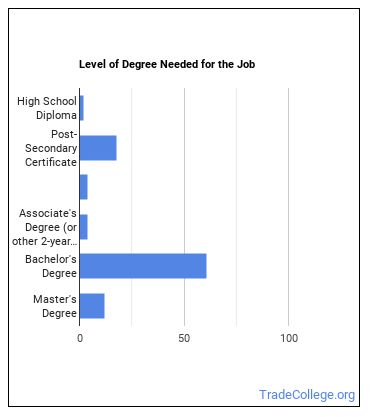
How many years of work experience do I need?

Where Airline Pilots, Copilots, and Flight Engineers Work
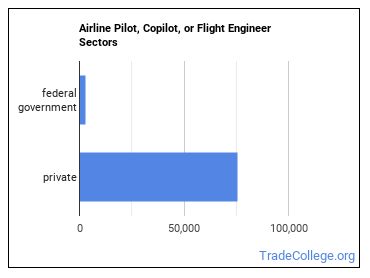
The table below shows the approximate number of Airline Pilots, Copilots, and Flight Engineers employed by various industries.
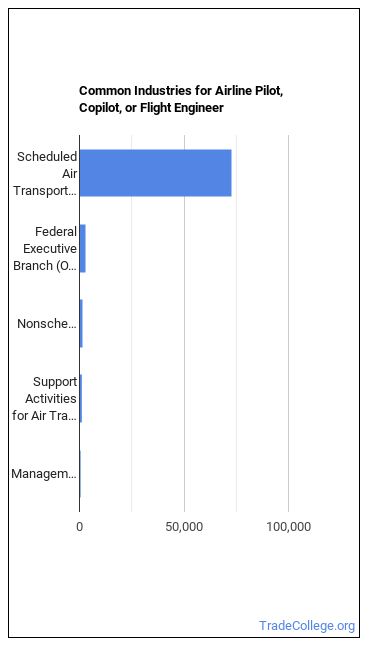
References:
Image Credit: Tech. Sgt. Scott T. Sturkol via U.S. Air Force photo
More about our data sources and methodologies.
Featured Schools
 Request Info
Request Info
|
Southern New Hampshire University You have goals. Southern New Hampshire University can help you get there. Whether you need a bachelor's degree to get into a career or want a master's degree to move up in your current career, SNHU has an online program for you. Find your degree from over 200 online programs. Learn More > |
